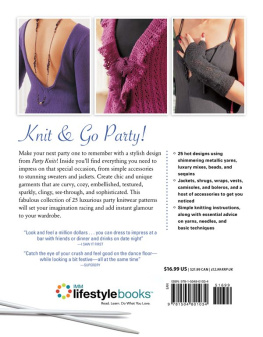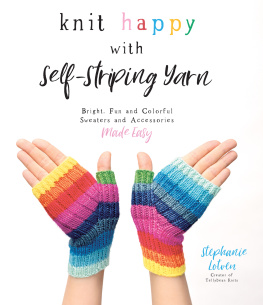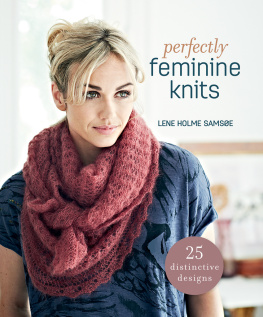EDITORIAL STAFF
Editor-in-Chief: Susan White Sullivan
Knit and Crochet Publications Director: Debra Nettles
Special Projects Director: Susan Frantz Wiles
Senior Prepress Director: Mark Hawkins
Art Publications Director: Rhonda Shelby
Technical Writer: Linda Daley
Editorial Writer: Susan McManus Johnson
Art Category Manager: Lora Puls
Graphic Designers: Becca Snider, Amy Temple, and Janie Marie Wright
Imaging Technician: Stephanie Johnson
Photography Manager: Katherine Laughlin
Contributing Photostylist: Angela Alexander
Contributing Photographer: Jason Masters
Publishing Systems Administrator: Becky Riddle
Mac Information Technology Specialist: Robert Young
BUSINESS STAFF
President and Chief Executive Officer: Rick Barton
Vice President and Chief Operations Officer: Tom Siebenmorgen
Director of Finance and Administration: Laticia Mull Dittrich
National Sales Director: Martha Adams
Information Technology Director: Hermine Linz
Controller: Francis Caple
Vice President, Operations: Jim Dittrich
Retail Customer Service Manager: Stan Raynor
Print Production Manager: Fred F. Pruss
Copyright 2010 by Leisure Arts, Inc., 5701 Ranch Drive, Little Rock, Arkansas, 72223-9633, www.leisurearts.com. All rights reserved. This publication is protected under federal copyright laws. Reproduction of this publication or any other Leisure Arts publication, including publications which are out of print, is prohibited unless specifically authorized. This includes, but is not limited to, any form of reproduction or distribution on or through the Internet, including posting, scanning or e-mail transmission. We have made every effort to ensure that these instructions are accurate and complete. We cannot, however, be responsible for human error, typographical mistakes or variations in individual work.
Library of Congress Control Number: 2010930928
ISBN-13: 978-1-60900-010-3
Warm Weather SWEATERS
Warm weather sweaters are not just cold weather sweaters knitted with lighter yarns and fibers! Shapes and details are different too, as I think you can see with these new designs.
I took the opportunity to use some favorite yarns as well as design with some new and exciting fibers I was and you might be! less familiar with. Here bamboo, soy, and hemp meet the more traditional summer cotton, linen, and blends. As a New Englander, I know that warm weather still calls for the occasional cool-wool sweater, as well as the lightest cover-up for a steamy August evening. In other parts of the country, where warm weather is more of a constant, the demand is for breathable, lightweight and cool-to-the-touch sweaters some of the newer fibers are just perfect for meeting these needs. Everywhere today air-conditioned buildings call for light sweaters.
Color is a design feature for warm weather too. Neutrals as well as shades of green and blue sand, plants and water are always cool feeling and light. Many plant fibers have an opalescent sheen, which I find crisp and summery. And what would summer be without the bright shades of beach umbrellas and paper lanterns or the festive colors of the dahlias and other annual flowers and vines and vegetables, too, to name a few?
As a designer, I find that lots of fun things go into creating a collection like this! The sweaters in this book draw upon all my personal interest and seasonal pleasures. As a long-time knitwear designer, I adore the search for new ways to use pattern stitches. And I am inspired by current fashion as well as the classics. I juggle my fascination for vintage clothing and old sewing patterns with a love for costumes from the movies of the 30s and 40s. I live for the summer the colors and light of my beloved Rhode Island summer coastline, and the lively nautical Newport and rural Block Island where I visit every spring and summer. I am inspired by the colors of my favorite home grown flowers and vegetables, and I draw on memories of foreign vacations, as well as armchair travel from the pages of books and magazines.
MEET Deborah Newton
Since she sold her first sweater in 1982 to McCALLs magazine, Deborah Newton has designed and produced hundreds, maybe thousands, of knitted garments of all types which have earned her a reputation as one of the top knitwear designers in the United States. Her earlier career as a creator of stage costumes has endowed her work with a dramatic flair and elements of fine tailoring. In 1992, she distilled her experience and knowledge into a book, DESIGNING KNITWEAR (Taunton Press), an invaluable guide for amateur knitters who wish to create original patterns or simply improve their skills. The book remains in print nearly twenty years later, having attained the status of a classic. Deborahs work continues to appear in magazines and in book form. She designed the sweaters for another Leisure Arts Publication DEBORAH NEWTONS CABLE COLLECTION. She also designs knitted fabrics for the Seventh Avenue garment trade.
Born in Rhode Island, she has been a resident of Providence for over thirty years, where she lives with author Paul Di Filippo, her cocker spaniel Brownie, and her cat Penny Century. Perhaps her favorite place to relax in the world is the picturesque ocean haven of Block Island, although she admits that she has never yet designed a knitted bathing suit.
Choice & Care of Yarns FOR WARM WEATHER SWEATERS
All the yarns used for the projects in this book were carefully chosen, and Ive described all the fabrics so you have a feel for how they affect the design and its wear-ability. Of course you may substitute other yarns for any of the projects, and I have made suggestions. However, for successful fit, take care to obtain the same gauge as the original pattern.
Warm weather yarns are a little fussier in care and handling than many resilient wools and animal fibers used for warmer garments, but they are well worth the effort for their coolness, drape and texture. Be sure to read the labels for any yarn that you consider, and take care to follow the specific instructions for cleaning and use of heat, cautions for either ironing and/or steaming.
Get the correct gauge, knitting a good-sized swatch at least 6" (15 cm) by 6" (15 cm). Remind yourself that the little time it takes is worth your investment in yarn.
Since many summer yarn choices, often plant fibers, do not have the springiness of wool or other animal fibers, you may find that it is valuable to do two things to insure accurate gauge and reliable fit in the final sweater. First, if you sense that a yarn might stretch, work your initial swatch on a smaller needle. Then, even though this might sound silly, carry your swatch in your bag, handle it on and off for a few days to see if it stretches. Check your gauge more accurately after this small effort. If the gauge stays the same, then you can be assured that the garment too will not stretch.










